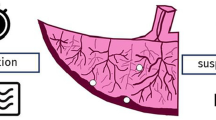Abstract
The placenta is fundamental for fetal development. The aim of this study was to determine Ca, Fe, Cu, and Zn content in the fetal and maternal portions of the placentas of teenage and adult women. Measurement of the minerals was conducted using Synchrotron radiation total reflection X-ray fluorescence. Forty samples from the fetal portion of teenagers and adults and 40 samples from the maternal portion of teenagers and adults were analyzed. There were significant differences in the Ca and Cu concentrations of the placenta’s maternal portion when compared to the fetal portion, for both teenagers and adults. There were differences in Fe and Zn concentrations only when comparing the maternal portion of placenta with the fetal portion of the adults. These results suggest important differences in mineral content based on the placental portion. No significant difference was observed between the minerals studied of the maternal portion of teenagers and adults; however, in the fetal portion, mineral concentrations were greater in adults than in teenagers. Therefore, the mineral concentration of the fetal portion of the placenta is influenced by the mother’s age. If there is mineral’s competition between the mother and fetus during pregnancy in adolescence due to the importance of these minerals in growth and development, then the mechanism and reason for it should be elucidated in future research. In addition, we believe that further research should be carried out on transporters of these minerals in the same portions of the placentas analyzed by our group, in teenagers and adults.

Similar content being viewed by others
References
Parolini O, Alviano F, Bagnara GP et al (2008) Concise review: isolation and characterization of cells from human term placenta: outcome of the First International Workshop on Placenta-Derived Stem Cells. Stem Cells 26(2):300–311
Moore KL, Persau TVN (1995) Placenta e membranas fetais. In: Moore KL, Persau TVN (eds) Embriologia Básica. Editora Guanabara Koogan, Rio de Janeiro, pp 123–160
Picciano MF (2003) Pregnancy and lactation: physiological adjustments nutritional requirements and the role of dietary supplements. J Nutr 133:1997S–2002S
Brasil ALD, Coelho MRV, Lopez FA, Nóbrega FJ (1991) Gravidez e lactação na adolescência. Rev Paul Pediatr 9:39–43
McClellan R, Novak D (2001) Fetal nutrition: how we become what we are. J Pediatr Gastroenterol Nutr 33:233–244
McArdle HJ, Ashworth CJ (1999) Micronutrients in fetal growth and development. Br Med Bull 55:499–510
Iyengar GV, Rapp A (2001) Human placenta as a ‘dual’ biomarker for monitoring fetal and maternal environment with special reference to potentially toxic trace elements. Part 2: essential minor, trace and other non-essential elements in human placenta. Sci Total Environ 280:207–219
Capurro H (1978) A simplified method for diagnosis of gestational age in the newborn infant. J Pediatr 93:120–122
Ballard JL, Khoury JC, Wedig K et al (1991) New Ballard score, expanded to include extremely premature infants. J Pediatr 119:417–423
World Health Organization (WHO) (2007) Development of a WHO growth reference for school-aged children and adolescents. Bull World Health Organ 85:660–667
World Health Organization (WHO) (1995) Physical status: the use and interpretation of anthropometry. Technical Report Series 854. WHO, Geneva
Institute of Medicine (IOM) (1992) National Academy of Sciences. Nutrition during pregnancy and lactation. An implementation guide. National Academy Press, Washington, D.C
Osman K, Akesson A, Berglund M, Bremme K (2000) Toxic and essential elements in placentas of Swedish women. Clin Biochem 33:131–138
Jansson T, Powell TL (2006) Human placenta transport in altered fetal growth: does the placenta function as a nutrient sensor? Placenta 27:91S–97S
Moreau R, Daoud G, Bernatchez R et al (2002) Calcium uptake and calcium transporter expression by trophoblast cells from human term placenta. Biochim Biophys Acta 1564:325–332
Belkacemi L, Bedard I, Simoneau L, Lafond J (2005) Calcium channels, transporters and exchangers in placenta: a review. Cell Calcium 37:1–8
Carvalho ML, Custódio PJ, Réus U, Prange A (2001) Elemental analysis of human amniotic fluid and placenta by total-reflection X-ray fluorescence and energy-dispersive X-ray fluorescence: child weight and maternal age dependence. Spectroc Acta Part B 56:2175–2180
Raghunath R, Tripathi RM, Sastry VN, Krishnamoorthy TM (2000) Heavy metals in maternal and cord blood. Sci Total Environ 250:135–141
Krachler M, Rossipal E, Micetic-Turk D (1999) Trace element transfer from the mother to the newborn−investigations on triplets of colostrum, maternal and umbilical cord sera. Eur J Clin Nutr 53(6):486–494
Rossipal E (2000) Investigation on the transport of trace elements across barriers in humans: studies of placental and mammary transfer. J Trace Microprobe Tech 18(4):493–497
Kubala-Kukus A, Banas D, Braziewicz J, Majewska U, Pajek M (2003) Comparative study of trace element contents in human full-term placenta and fetal membranes by total reflection X-ray fluorescence. Spectroc Acta Part B 58:725–734
Manci EA, Blackborn WR (1987) Regional variations in the levels of zinc, iron, copper, and calcium in the term human placenta. Placenta 8:497–502
Moraes ML, Barbosa RF, Santo RE et al. (2010). Maternal–fetal distribution of calcium, iron, copper, and zinc in pregnant teenagers and adults. Biol Trace Elem Res. Available from: http://www.springerlink.com/content/r0232l87563113l2/. Accessed on: 10 Apr 2010
Author information
Authors and Affiliations
Corresponding author
Rights and permissions
About this article
Cite this article
de Moraes, M.L., de Faria Barbosa, R., Santo, R.E. et al. Distribution of Calcium, Iron, Copper, and Zinc in Two Portions of Placenta of Teenager and Adult Women. Biol Trace Elem Res 143, 1271–1281 (2011). https://doi.org/10.1007/s12011-011-8963-7
Received:
Accepted:
Published:
Issue Date:
DOI: https://doi.org/10.1007/s12011-011-8963-7




